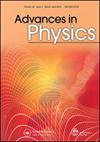狄拉克材料
IF 35
1区 物理与天体物理
Q1 PHYSICS, CONDENSED MATTER
引用次数: 673
摘要
各种各样的材料,如d波超导体、石墨烯和拓扑绝缘体,都有一个基本的相似之处:它们的低能费米子激发表现为无质量的狄拉克粒子,而不是遵从通常的Schrödinger哈密顿量的费米子。狄拉克费米子在凝聚态系统中的这种涌现行为定义了一类我们称之为“狄拉克材料”的材料的统一框架。为了建立这类材料,我们说明了狄拉克费米子是如何在多个完全不同的凝聚态物质系统中出现的,我们讨论了狄拉克费米子是如何通过电子能谱技术(角分辨光发射光谱和扫描隧道光谱)实验确定的。由于它们共同的低能激发,这种不同的材料在低能(红外)极限中具有大量的通用特性。我们回顾了这些常见的性质,包括激发谱中的节点、态密度、比热、输运、热力学性质、杂质共振和磁场响应,并讨论了多体相互作用效应。我们进一步回顾了狄拉克激发的出现是如何由材料的特定对称性控制的,例如时间反转、规范和自旋轨道对称性,以及如何通过打破这些对称性来产生有限的狄拉克质量。我们给出了狄拉克费米子与其独特的真实物质背景的相互作用如何导致具有共同指纹的丰富新颖物理的例子,例如抑制反向散射和杂质诱导的共振态。本文章由计算机程序翻译,如有差异,请以英文原文为准。
Dirac materials
A wide range of materials, like d-wave superconductors, graphene, and topological insulators, share a fundamental similarity: their low-energy fermionic excitations behave as massless Dirac particles rather than fermions obeying the usual Schrödinger Hamiltonian. This emergent behavior of Dirac fermions in condensed matter systems defines the unifying framework for a class of materials we call “Dirac materials.” In order to establish this class of materials, we illustrate how Dirac fermions emerge in multiple entirely different condensed matter systems and we discuss how Dirac fermions have been identified experimentally using electron spectroscopy techniques (angle-resolved photoemission spectroscopy and scanning tunneling spectroscopy). As a consequence of their common low-energy excitations, this diverse set of materials shares a significant number of universal properties in the low-energy (infrared) limit. We review these common properties including nodal points in the excitation spectrum, density of states, specific heat, transport, thermodynamic properties, impurity resonances, and magnetic field responses, as well as discuss many-body interaction effects. We further review how the emergence of Dirac excitations is controlled by specific symmetries of the material, such as time-reversal, gauge, and spin–orbit symmetries, and how by breaking these symmetries a finite Dirac mass is generated. We give examples of how the interaction of Dirac fermions with their distinct real material background leads to rich novel physics with common fingerprints such as the suppression of back scattering and impurity-induced resonant states.
求助全文
通过发布文献求助,成功后即可免费获取论文全文。
去求助
来源期刊

Advances in Physics
物理-物理:凝聚态物理
CiteScore
67.60
自引率
0.00%
发文量
1
期刊介绍:
Advances in Physics publishes authoritative critical reviews by experts on topics of interest and importance to condensed matter physicists. It is intended for motivated readers with a basic knowledge of the journal’s field and aims to draw out the salient points of a reviewed subject from the perspective of the author. The journal''s scope includes condensed matter physics and statistical mechanics: broadly defined to include the overlap with quantum information, cold atoms, soft matter physics and biophysics. Readership: Physicists, materials scientists and physical chemists in universities, industry and research institutes.
 求助内容:
求助内容: 应助结果提醒方式:
应助结果提醒方式:


